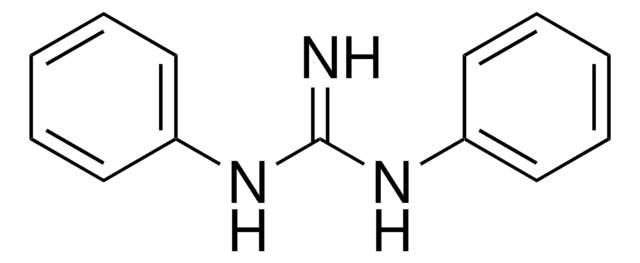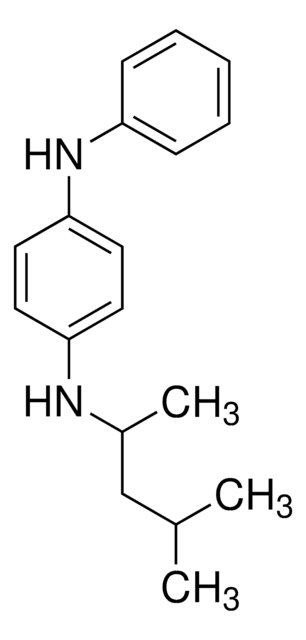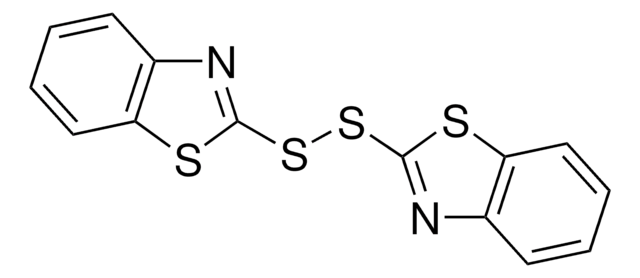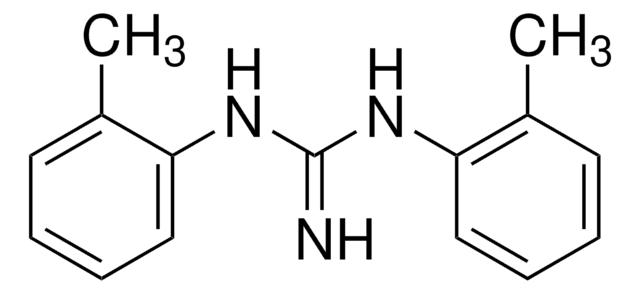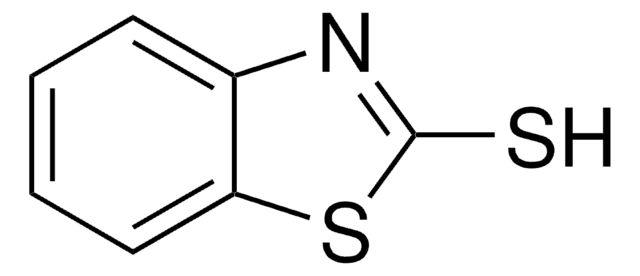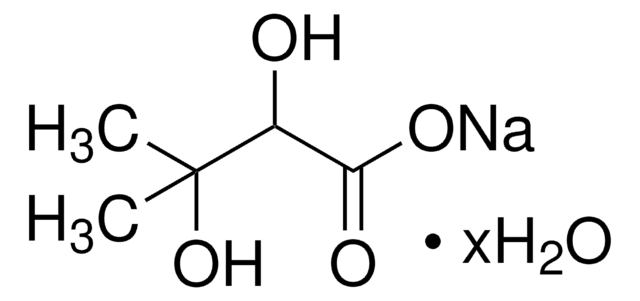Kluczowe dokumenty
43029
1,3-Diphenylguanidine
analytical standard (for titrimetry)
About This Item
Polecane produkty
klasa czystości
analytical standard (for titrimetry)
Poziom jakości
Próba
≥99.5% (HPLC)
metody
titration: suitable
mp
146-148 °C (lit.)
149-150 °C
Zastosowanie
cleaning products
cosmetics
food and beverages
personal care
Format
neat
ciąg SMILES
N=C(Nc1ccccc1)Nc2ccccc2
InChI
1S/C13H13N3/c14-13(15-11-7-3-1-4-8-11)16-12-9-5-2-6-10-12/h1-10H,(H3,14,15,16)
Klucz InChI
OWRCNXZUPFZXOS-UHFFFAOYSA-N
Szukasz podobnych produktów? Odwiedź Przewodnik dotyczący porównywania produktów
Opis ogólny
Zastosowanie
Cechy i korzyści
- Available as a solid in a secure glass bottle to ensure its stability for the entire shelf life until opened.
- High-quality offering accurate titer determinations
- Accompanied by a certificate of analysis (CoA)
Hasło ostrzegawcze
Danger
Zwroty wskazujące rodzaj zagrożenia
Zwroty wskazujące środki ostrożności
Klasyfikacja zagrożeń
Acute Tox. 3 Oral - Aquatic Chronic 2 - Eye Irrit. 2 - Repr. 2 - Skin Irrit. 2 - STOT SE 3
Organy docelowe
Respiratory system
Kod klasy składowania
6.1C - Combustible acute toxic Cat.3 / toxic compounds or compounds which causing chronic effects
Klasa zagrożenia wodnego (WGK)
WGK 3
Temperatura zapłonu (°F)
338.0 °F - closed cup
Temperatura zapłonu (°C)
170 °C - closed cup
Środki ochrony indywidualnej
Eyeshields, Faceshields, Gloves, type P3 (EN 143) respirator cartridges
Wybierz jedną z najnowszych wersji:
Certyfikaty analizy (CoA)
Nie widzisz odpowiedniej wersji?
Jeśli potrzebujesz konkretnej wersji, możesz wyszukać konkretny certyfikat według numeru partii lub serii.
Masz już ten produkt?
Dokumenty związane z niedawno zakupionymi produktami zostały zamieszczone w Bibliotece dokumentów.
Nasz zespół naukowców ma doświadczenie we wszystkich obszarach badań, w tym w naukach przyrodniczych, materiałoznawstwie, syntezie chemicznej, chromatografii, analityce i wielu innych dziedzinach.
Skontaktuj się z zespołem ds. pomocy technicznej